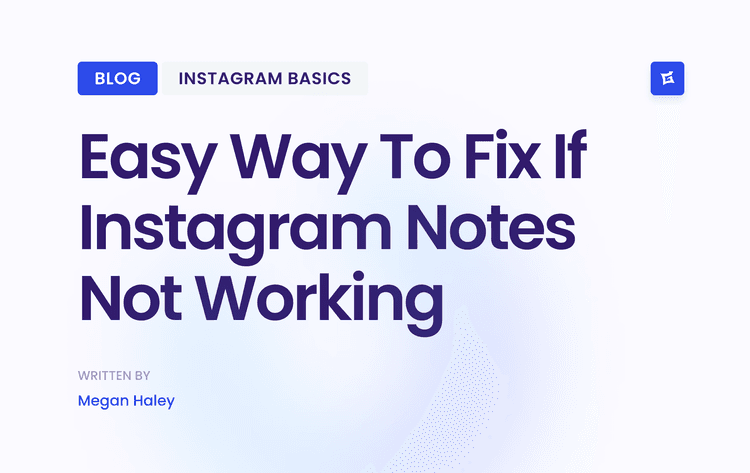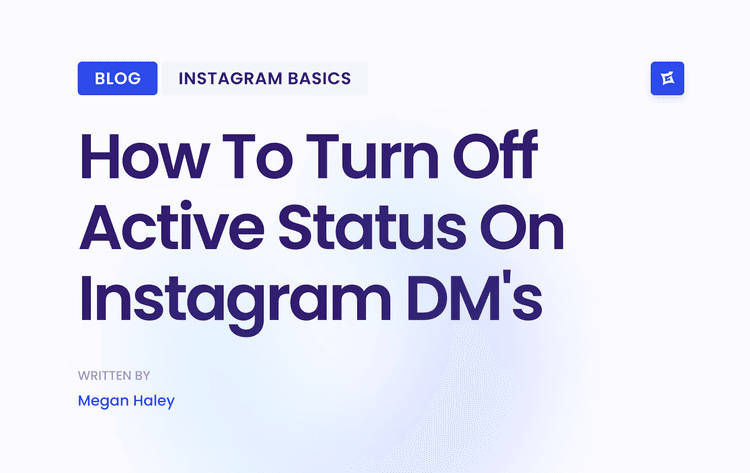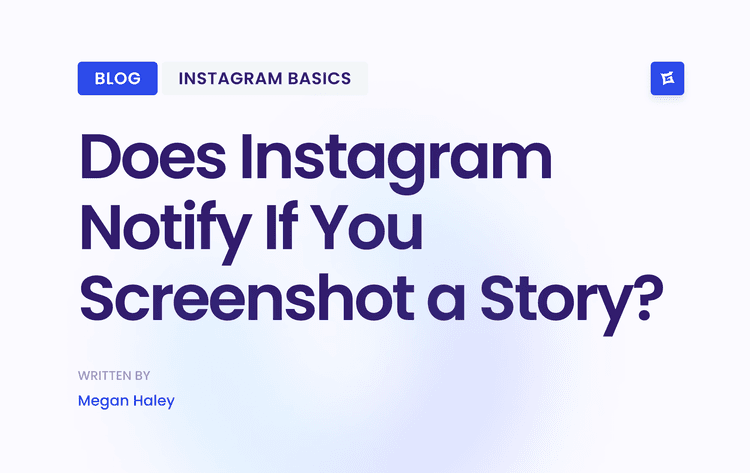The Heart of Digital Relationship-Building

Don't picture a community manager as someone with a megaphone, broadcasting messages to a crowd. Instead, think of them as the hosts of the best party you've ever been to. Their goal is to create a space that feels welcoming, where everyone feels heard, seen, and connected. They get the good conversations started, make introductions, and make sure the vibe stays positive and fun.
At its core, this role is all about fostering a real sense of belonging. While social media management is often about one-to-many communication—casting a wide net to pull in new followers—community management is about nurturing many-to-many interactions. It’s the magic that turns a scattered audience into a tight-knit group with a shared identity.
Why It’s No Longer a "Nice-to-Have"
We live in a world where people are tired of being sold to; they want to feel a genuine connection. This is where a thriving community becomes one of your most valuable assets. It’s the place where your most dedicated customers hang out, swap ideas, give you honest feedback, and help each other out. That direct line to your audience is gold for any business trying to build real loyalty and understand its customers on a much deeper level.
> A strong community becomes a brand's most powerful moat. It's a living, breathing ecosystem where people don't just buy from you—they actively champion your growth and defend you.
This guide is going to pull back the curtain on how this all works. We'll break down what community management is, what a community manager does all day, the skills they need, and how it all translates to tangible, sustainable growth for a business. It's so much more than just scheduling posts. It involves:
Deep Listening: Paying close attention to what members are saying—their frustrations, their wishes, and their brilliant ideas.
Sparking Engagement: Actively encouraging discussions and user-generated content that makes the community more valuable for everyone.
Building Real Connections: Fostering one-on-one relationships that make people feel like they’re more than just a number.
Strategic Growth: Thoughtfully planning initiatives that bring in the right* new members while keeping the current ones happy and engaged.
Why Community Management Is No Longer Optional
In a world where we’re all drowning in ads, people are looking for something real. They want a genuine connection, and that’s where community management has stepped out of the shadows and into the spotlight. It’s not just a nice-to-have anymore; it's a core part of how a business builds trust.
Think of it as the bridge between what your brand promises and what your customers experience. It’s the difference between someone just buying your product and someone feeling like they’re part of your story. A strong community isn't just a fan club—it's a business asset that pays dividends in loyalty, feedback, and even defense when things go wrong.
From Forum Janitor to Strategic Architect
The job has grown up. A community manager used to be the person who just deleted spam from a forum. Now, they are a strategic leader who actively shapes how people see and feel about a brand. They're the ears on the ground, bringing customer feedback directly into the company, and the company's most authentic voice talking back to the community.
This shift isn't just a feeling; the numbers back it up. The demand for well-run communities is exploding. One report projects that around 4,000 new community associations will pop up in 2025 alone. To keep up, a staggering 92% of community management companies plan on growing their teams, showing just how much faith they have in this space. You can read more about these trends and the sector's growth.
The Real Payoff of Building a Community
Putting resources into a community isn't just about chasing a trend. It's about fundamentally changing how you build relationships with the people who keep your business alive. A truly engaged community gives you a direct line to insights that can shape everything from your next product feature to your next big marketing campaign.
> A community is a business's most honest focus group. It's where you discover what customers truly love, what they find frustrating, and where your next big idea might come from.
Let's break down the tangible benefits:
Rock-Solid Customer Loyalty: When people feel like they belong, they stick around. It’s that simple. They’re less likely to jump ship to a competitor, even if the price is a little lower.
Lower Support Costs: A healthy community often polices and supports itself. Veteran members jump in to help newcomers solve problems, which takes a massive load off your official support team.
A Goldmine of Authentic Content: Happy community members create the best marketing material you could ask for. They post testimonials, share creative ways they use your product, and produce content that feels far more trustworthy than any slick ad campaign.
At the end of the day, a community gives you a competitive edge that can't be easily copied. It’s about creating a space where people don’t just buy from you—they belong with you. If you're ready to build that kind of connection, diving into different community engagement strategies is the perfect next move.
The Four Pillars of Community Management
So, what does a community manager do all day? It's not just one thing—it’s a strategic mix of different roles and responsibilities. The best way to understand community management is to break it down into four essential pillars. Think of these as the foundation holding everything up.
These pillars don't work in isolation. They're deeply interconnected, each one feeding into the next to build, grow, and sustain a healthy community. Let's dig into what each of these core functions looks like in the real world.
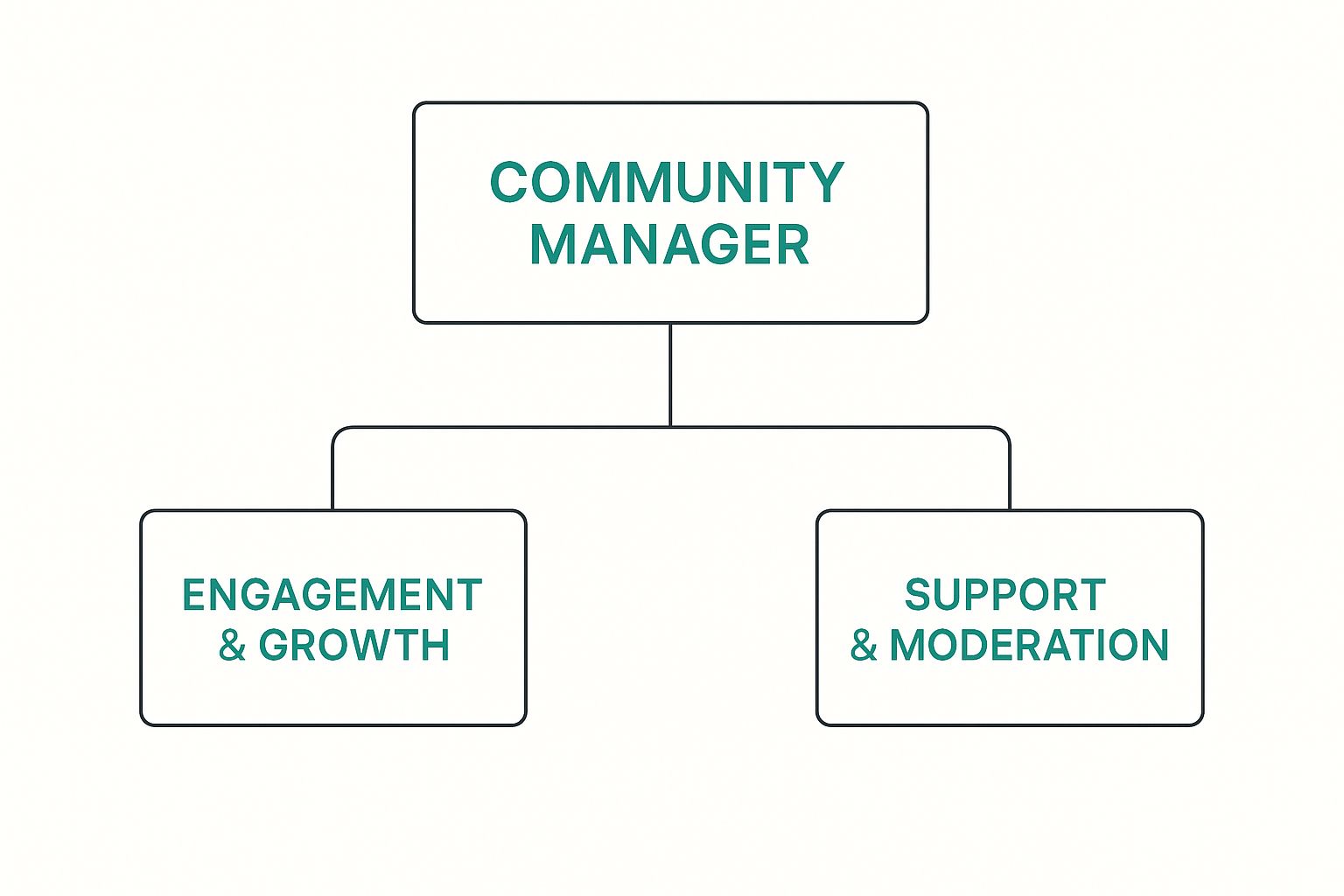
As you can see, a community manager is constantly juggling proactive growth initiatives with reactive support. It's this balance that makes a community successful.
Content and Engagement
The first pillar is all about content and engagement. A community manager is the spark that gets the conversation started. They aren't just posting updates; they're crafting experiences that get members talking to the brand and, even more importantly, to each other. This is the community's lifeblood.
Here’s what that looks like in practice:
Sparking Discussions: Posing interesting, open-ended questions or running polls that invite people to share their opinions.
Creating Value-Driven Content: This could be anything from developing how-to guides and hosting Q&A sessions to sharing exclusive insights members can't find anywhere else.
User-Generated Content (UGC): Actively encouraging members to share their creations and stories, then celebrating that content. This builds a powerful sense of shared ownership.
> A community without active engagement is just an audience waiting for the next announcement. The goal is to shift from one-to-many broadcasting to many-to-many conversations.
Moderation and Safety
Next up is moderation and safety. For people to feel comfortable sharing, the community has to be a safe and welcoming space. The community manager acts as the guardian of that environment, enforcing guidelines and stepping in to resolve conflicts before they get out of hand.
This isn't about suppression; it's about coordination. By filtering out spam, managing trolls, and handling disruptive behavior, they ensure that the real, valuable conversations have room to flourish. A well-moderated space builds trust, which is the currency of any strong community.
Growth and Outreach
The third pillar is growth and outreach. A community needs a steady stream of new members to stay fresh and dynamic. The manager is responsible for attracting the right kind of people—not just anyone, but individuals who will contribute positively to the culture.
This often involves promoting the community across different channels and, crucially, creating a smooth onboarding process that makes new members feel welcome and valued from day one.
Listening and Reporting
Finally, we have listening and reporting. A community manager is the company's eyes and ears on the ground. They have a direct line to the brand's most passionate and honest users, which is an incredible advantage. They listen to feedback, spot emerging trends, and identify pain points before they become major problems.
Their job is then to translate all those conversations and qualitative insights into actionable data. They report their findings back to the product, marketing, and support teams, creating a powerful feedback loop. This process allows the entire business to make smarter, customer-centric decisions based on what people want and need. It turns the community from a simple communication channel into a true strategic asset.
Essential Skills Every Community Manager Needs
Great community management is more art than science, but it requires a bit of both. It's a role that demands a unique blend of soft skills for building genuine relationships and hard skills for proving value and driving growth. The best in the business are chameleons—part empath, part strategist, and part data nerd.
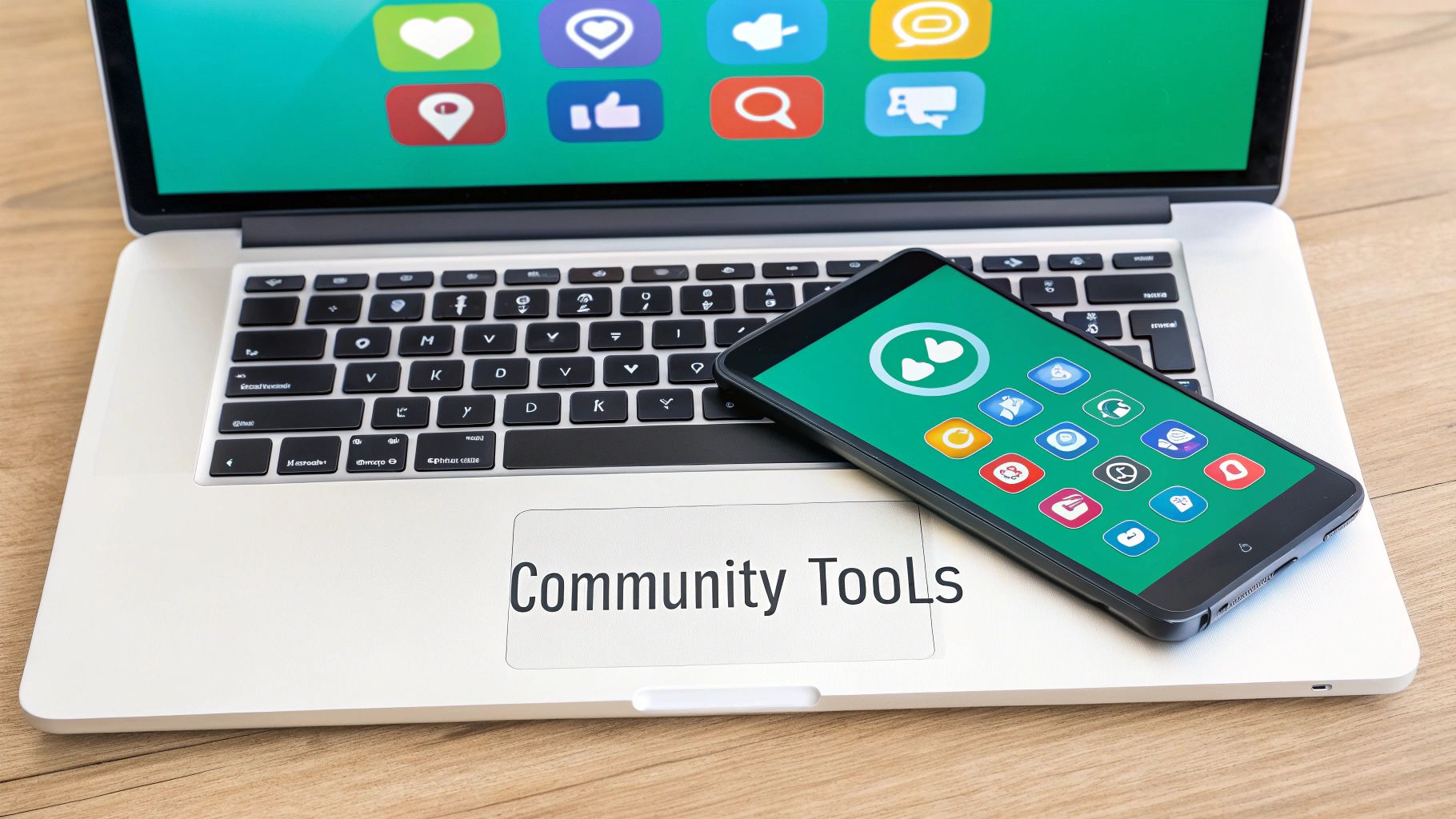
This job forces you to switch gears constantly. One minute, you're carefully navigating a heated debate between two passionate members. Next, you're deep in an analytics dashboard, trying to figure out why a certain type of post is suddenly taking off. It’s a balancing act, for sure.
Foundational Soft Skills
At the core of it all are the interpersonal skills that build trust and make people feel safe enough to participate. Without these, a community is just a collection of avatars in the same digital space. The most critical soft skills are non-negotiable:
Deep Empathy: This isn't just about being nice; it's the ability to truly put yourself in a member's shoes. Seeing things from their perspective is the secret to forging authentic connections and handling tough conversations with grace.
Active Listening: A top-tier manager isn't just waiting for their turn to type. They're paying close attention to what members are saying—and just as importantly, what they aren't* saying. This is how you spot budding trends, address unspoken frustrations, and make people feel genuinely valued.
Conflict Resolution: Let's be real: disagreements are going to happen. A skilled manager knows how to step in as a neutral third party, cool things down, and steer the conversation toward a productive outcome that reinforces the community's ground rules.
Strategic Hard Skills
While soft skills lay the groundwork, hard skills are what turn a friendly group into a strategic asset. These are the more technical, data-focused abilities that connect the dots between community activity and real business results.
> Community management is shifting towards hyper-personalization, where managers leverage data to make every member feel seen and heard. This is creating a level of loyalty that one-size-fits-all approaches can never match.
We're seeing a huge move toward creating experiences tailored to the individual. Think about it: 80% of consumers say they're more likely to buy from a company that personalizes their interactions. This means community managers are now expected to use data to guide members on a journey that fits their specific needs. You can learn more about where things are headed by checking out these community management trends for 2025.
The key hard skills that make this possible include:
Data Analysis: You have to be comfortable digging into the numbers. This means interpreting engagement metrics, tracking key performance indicators (KPIs), and turning all that data into clear, actionable insights for the rest of the company.
Content Strategy: This involves creating a smart content calendar that serves both the community's interests and the brand's goals. The aim is to deliver a consistent flow of stuff people want to engage with.
Project Management: A community manager is often an event planner, contest organizer, and program leader all rolled into one. Being able to manage these initiatives from start to finish—on time and budget—is crucial.
The Modern Community Manager's Toolkit
Technology has become the community manager's best friend. It’s a force multiplier, helping us scale genuine human connection without losing that personal touch. A great toolkit doesn't replace authentic interaction; it enhances it. It frees you from the tedious, repetitive tasks so you can focus on what matters: building relationships.
Think of your tech stack less like a complicated control panel and more like a well-organized workshop. Each tool has a specific purpose, helping you craft a vibrant and engaging community experience. The right software helps you work smarter, not harder.
Core Components of a Community Tech Stack
A solid toolkit comes down to three key areas. When you integrate tools across these categories, you get a 360-degree view of your community’s health, which allows you to make decisions based on data, not just guesswork.
Community Platforms: This is your home base. It's the central hub where all the magic happens—the discussions, events, and content sharing. Think platforms like Discord, Circle, or Slack.
Social & Analytics Tools: These are your eyes and ears. Tools like Sprout Social or Hootsuite help you listen in on conversations across the web, track brand mentions, and understand what your members are thinking and feeling.
Automation & Integration Tools: These are the secret weapons for efficiency. A tool like Zapier can connect all your different apps, automating routine workflows and saving you countless hours of manual data entry.
The Rise of AI and Automation
Automation, especially with the recent advancements in AI, is a total game-changer. These tools can now handle routine tasks like flagging spam, generating quick analytics reports, and even answering frequently asked questions.
This isn't just a niche trend; it's becoming standard practice. A recent survey found that 64% of teams in community-focused roles are already using automation, and another 17% have plans to start soon. By taking the busywork off your plate, this technology frees you up to invest your time in more strategic, high-impact work.
This efficiency is crucial, especially if you're trying to grow an audience. For those just starting, learning how to build an online community means picking the right foundational tools from day one. To keep things running smoothly, many managers also turn to platform-specific solutions, like the top community management tools for Telegram.
Ultimately, the best toolkit is one that amplifies the human element, making it easier to foster the authentic interactions that make a community truly great.
How to Measure Community Success That Matters

So, how do you prove your community isn't just a "nice-to-have" side project? The real measure of success isn't just about counting heads. It's about showing the tangible, bottom-line impact your community has on the business.
We have to move past vanity metrics and connect the dots between community activity and core business goals. Are members talking to each other? Is the community making customers stick around longer? Asking these questions is how you shift the conversation from simple growth to genuine value.
> The true ROI of a community isn’t found in how many people join, but in how their participation changes behavior. It’s about tracking the shift from passive consumer to active advocate and measuring the business impact of that change.
When you take this data-focused approach, you can confidently show stakeholders the incredible value of your work. It also helps you make smarter decisions to keep the community thriving for the long drag.
Focusing on Actionable KPIs
To really get a feel for your community's health, you need to track more than just one number. A smart way to do this is by grouping your metrics into a few key categories. This gives you a complete picture and helps you tell a compelling story about your community's impact.
Let's break down the metrics that truly matter.
Activity Metrics: Think of these as the community's pulse. We're looking at things like the number of active members (people who actually show up), new posts, and the average comments per post. These raw numbers tell you if the lights are on and people are home.
Engagement Metrics: This is where things get interesting. Metrics like how quickly questions get answered (response time) and the amount of user-generated content (UGC) show you how connected and helpful the group really is. Strong engagement means you've built something that can almost run itself. For more ideas on boosting interaction, check out these Instagram engagement strategies.
Business Impact Metrics: This is the language that executives understand. Here, you tie community efforts directly to dollars and cents by tracking things like customer retention rates for members vs. non-members, or a drop in customer support tickets. You can even track leads generated from conversations within the group. To really master this, you need to know the top social media engagement metrics to track.
To help you get started, here is a breakdown of essential KPIs and what they tell you about your business.
Essential Community KPIs and Their Business Impact
Growth & Activity – Measured by Monthly Active Users (MAU), this reflects the core vitality and size of the truly engaged user base.
Engagement – Measured by Average Replies Per Thread, it indicates the depth of conversation and peer-to-peer interaction within the community.
Support Efficiency – Measured by the percentage of questions answered by the community, this shows the community’s ability to self-serve, thereby reducing support costs.
Customer Loyalty – Measured by Member vs. Non-Member Churn Rate, it reflects the direct impact of the community on customer retention.
Advocacy & Reach – Measured by the volume of User-Generated Content (UGC), this shows the community’s willingness to create content and advocate for the brand.
Sales & Revenue – Measured by leads or conversions from the community, this highlights the community’s influence on the sales pipeline and revenue generation.
Tracking these metrics gives you the evidence you need to prove your community is a powerful business asset, not just a cost center. It's how you go from managing conversations to driving real, measurable results.
Common Questions About Community Management
As community management becomes more essential, a lot of practical questions pop up. Getting your head around these common queries is key to understanding the real value of the role and figuring out if it's the right career path for you. Let's dig into a few of the big ones.
How Is Community Management Different from Customer Support?
This is probably the most common question I get. While both roles are all about helping people, they operate in completely different ways.
Think of customer support as being reactive. A customer has a problem, they open a ticket, and a support agent fixes it. It's a direct, one-on-one transaction designed to solve an immediate issue.
Community management, on the other hand, is proactive and built around one-to-many relationships. The goal isn't just to fix one person's problem; it's to build a space where members can help each other. A community manager gets conversations going, connects people, and gives members the tools and confidence to answer questions themselves. Over time, this reduces the load on traditional support teams.
> A great customer support agent closes a ticket. A great community manager prevents hundreds of future tickets by building a space where answers are easy to find and members help each other.
What Are the Biggest Challenges in This Field?
It's not always easy, that's for sure. One of the toughest hurdles is proving the return on investment (ROI). Unlike a sales campaign where you can point directly to revenue, the impact of a strong community is often less direct. You have to get creative and track things like member retention, a drop in support costs, or an increase in customer lifetime value to paint the full picture of its business impact.
Another huge challenge is simply preventing burnout. Community managers are constantly "on"—moderating conversations, handling conflicts, and absorbing the collective energy of the group, both good and bad. It's an incredibly rewarding job, but it can also be emotionally draining. Learning to set clear boundaries and lean on automation tools isn't just a good idea; it's essential for staying effective and happy in the long run.
Ready to grow your community on Instagram? Gainsty uses advanced AI and expert strategies to help you gain real, engaged followers organically. Start building your audience with Gainsty today.
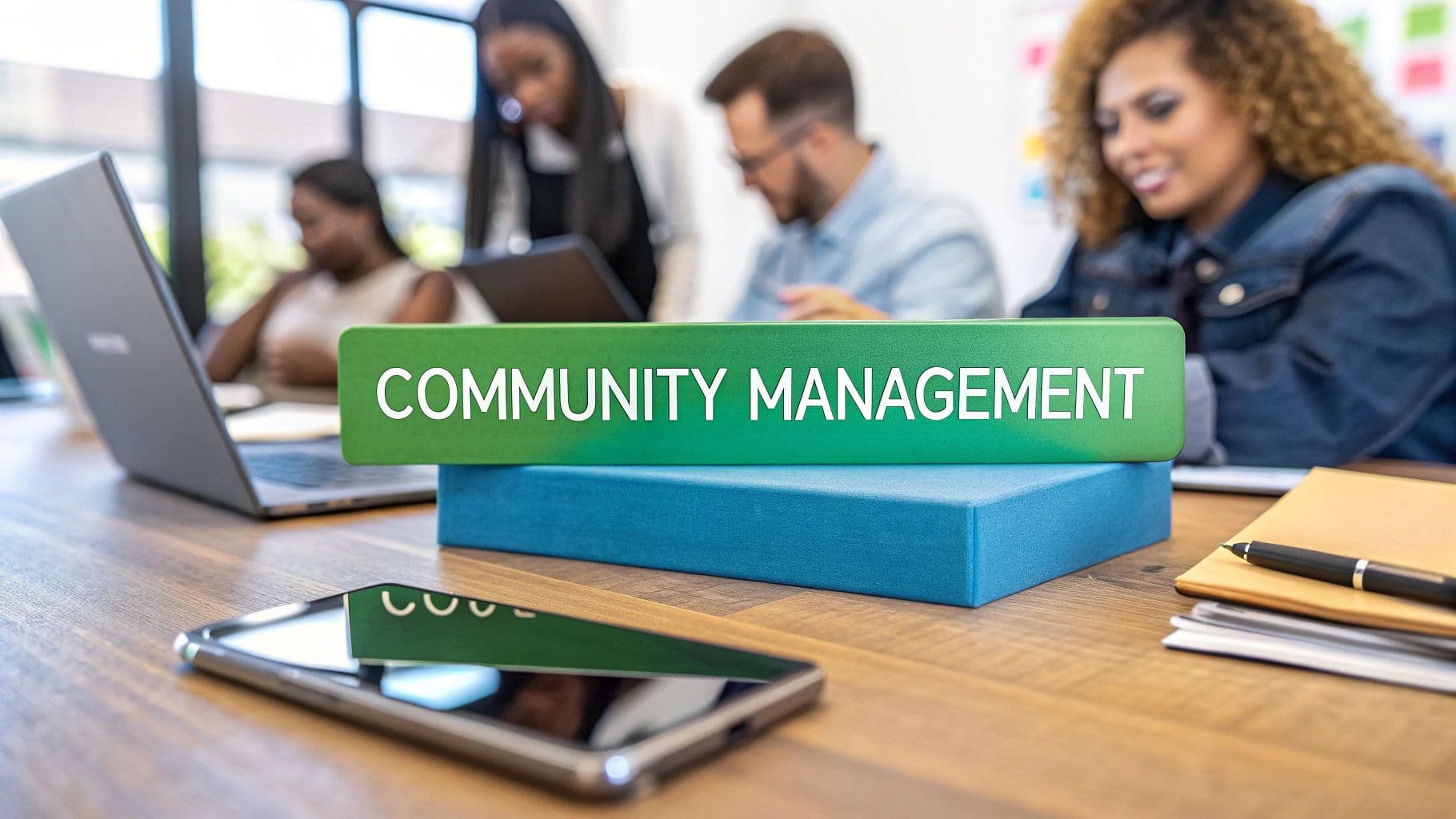
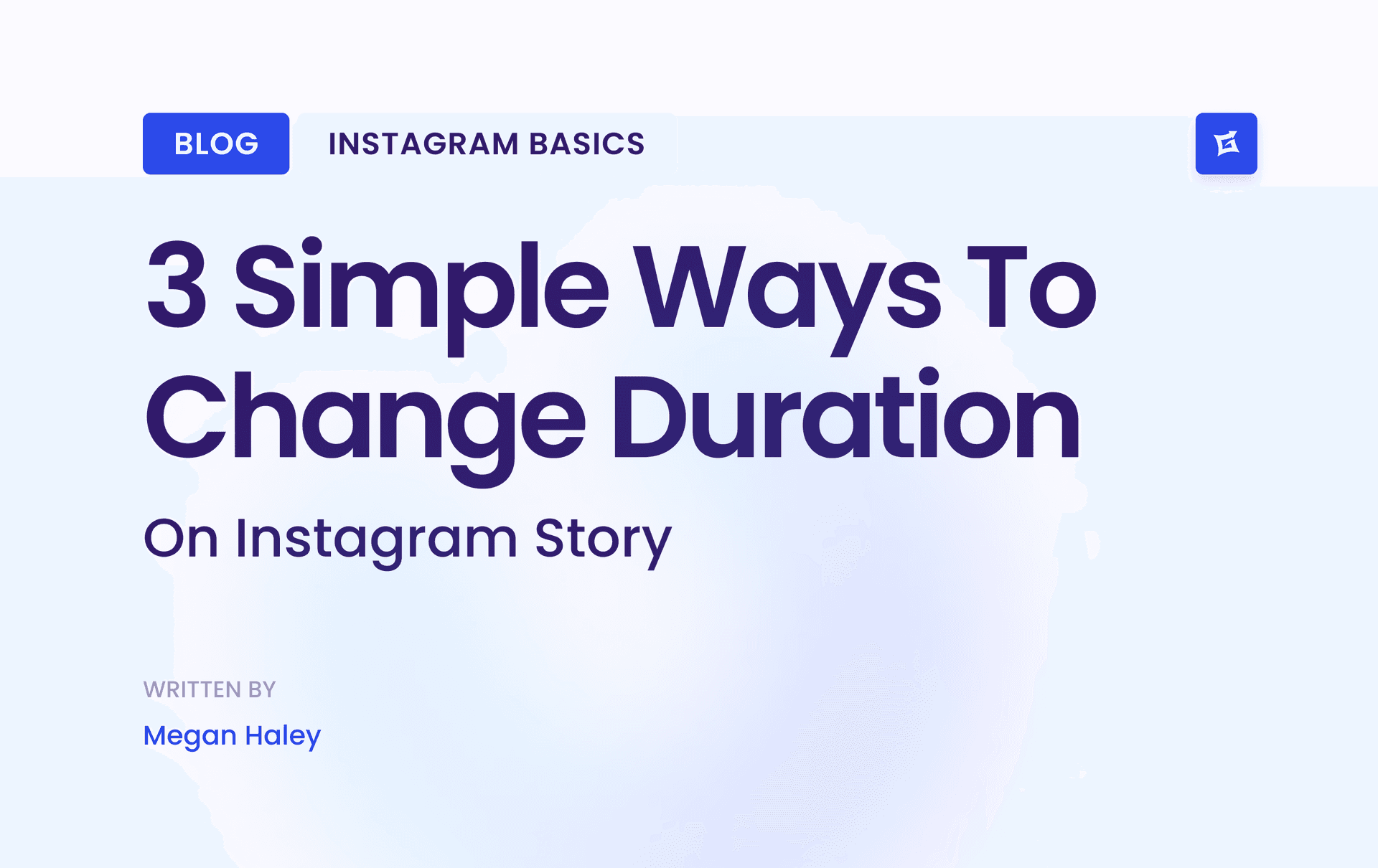
.png&w=1920&q=75&dpl=dpl_Byg4UCPHSaHbHVVtp2RwFp1gwKki)
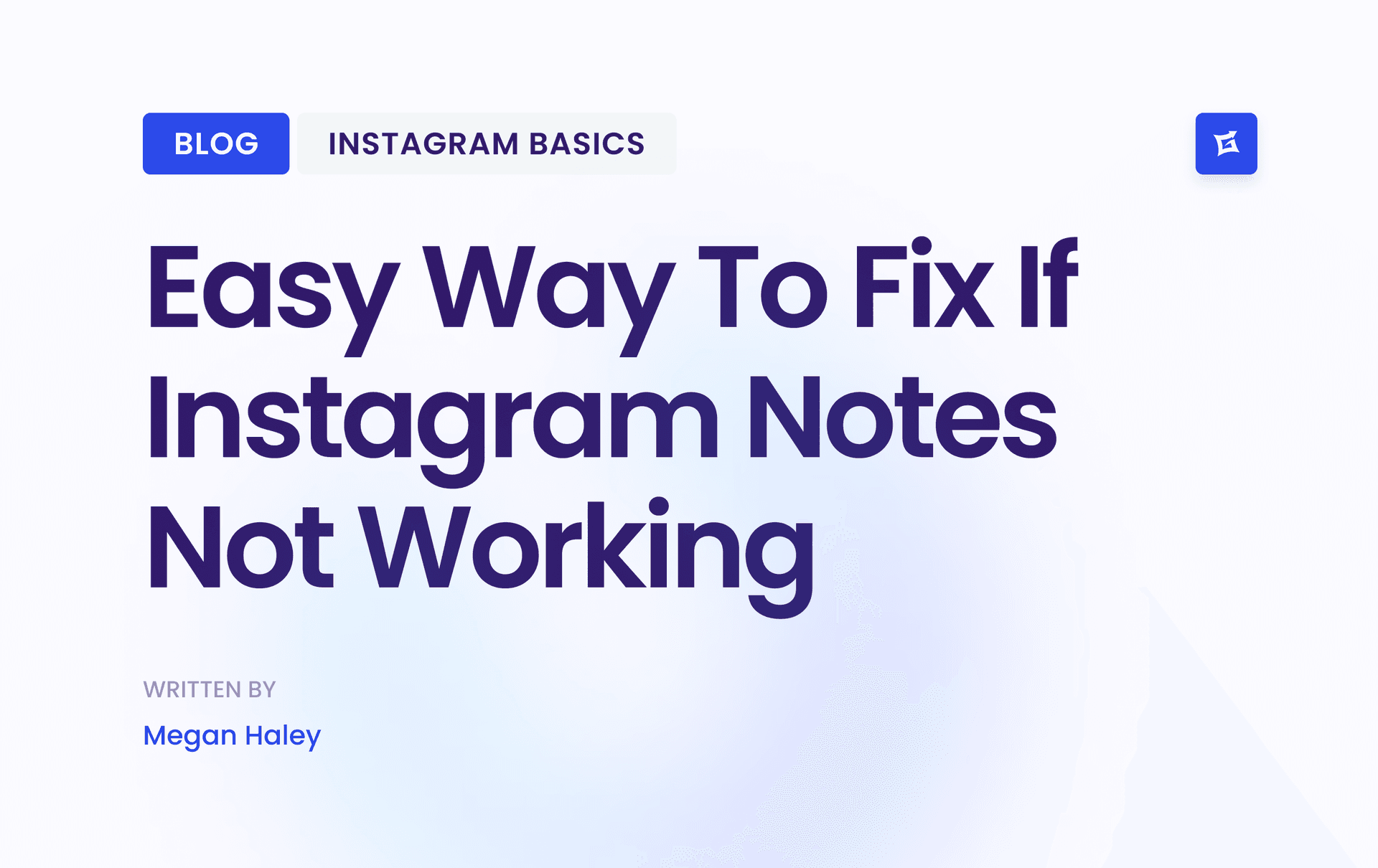

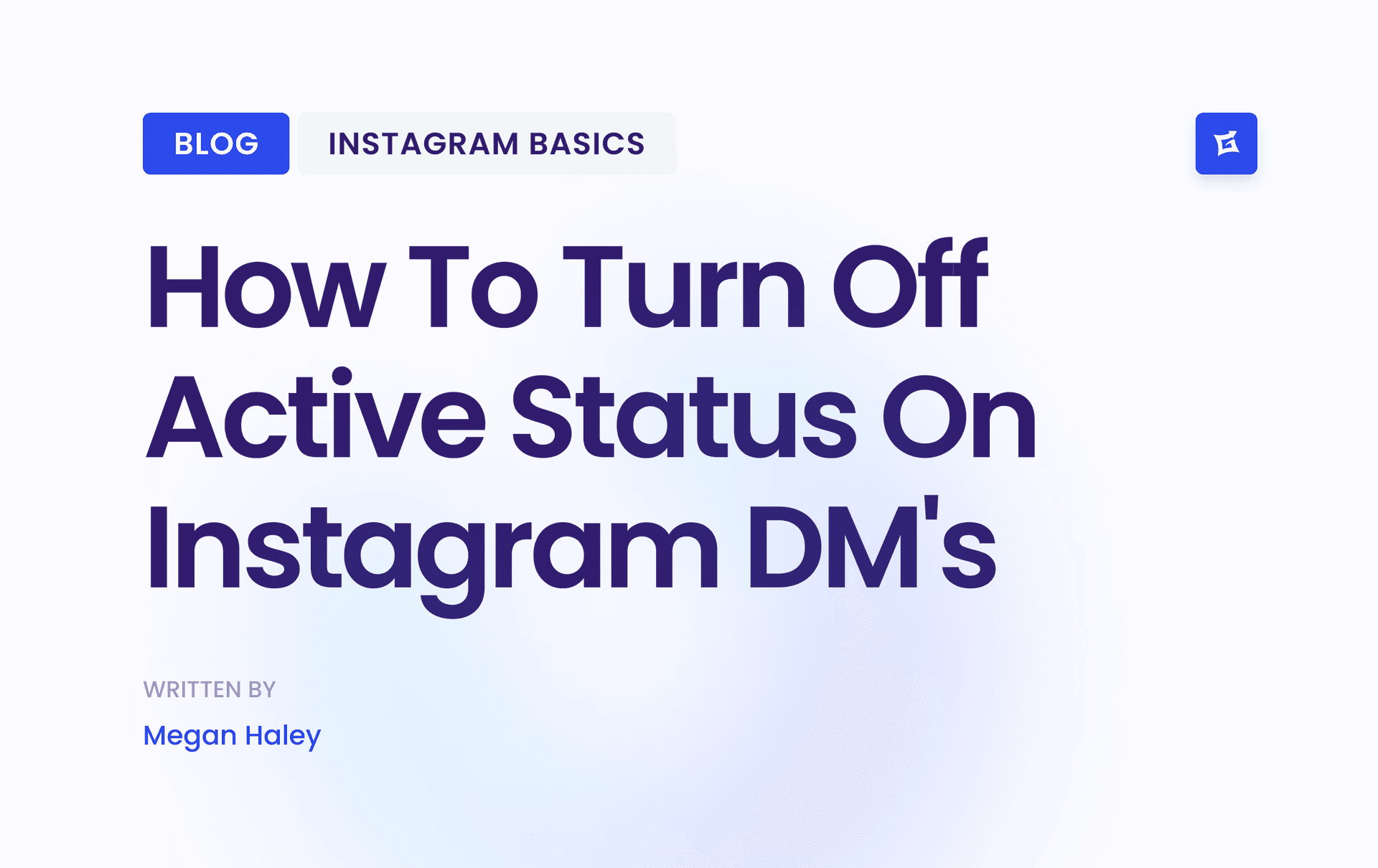
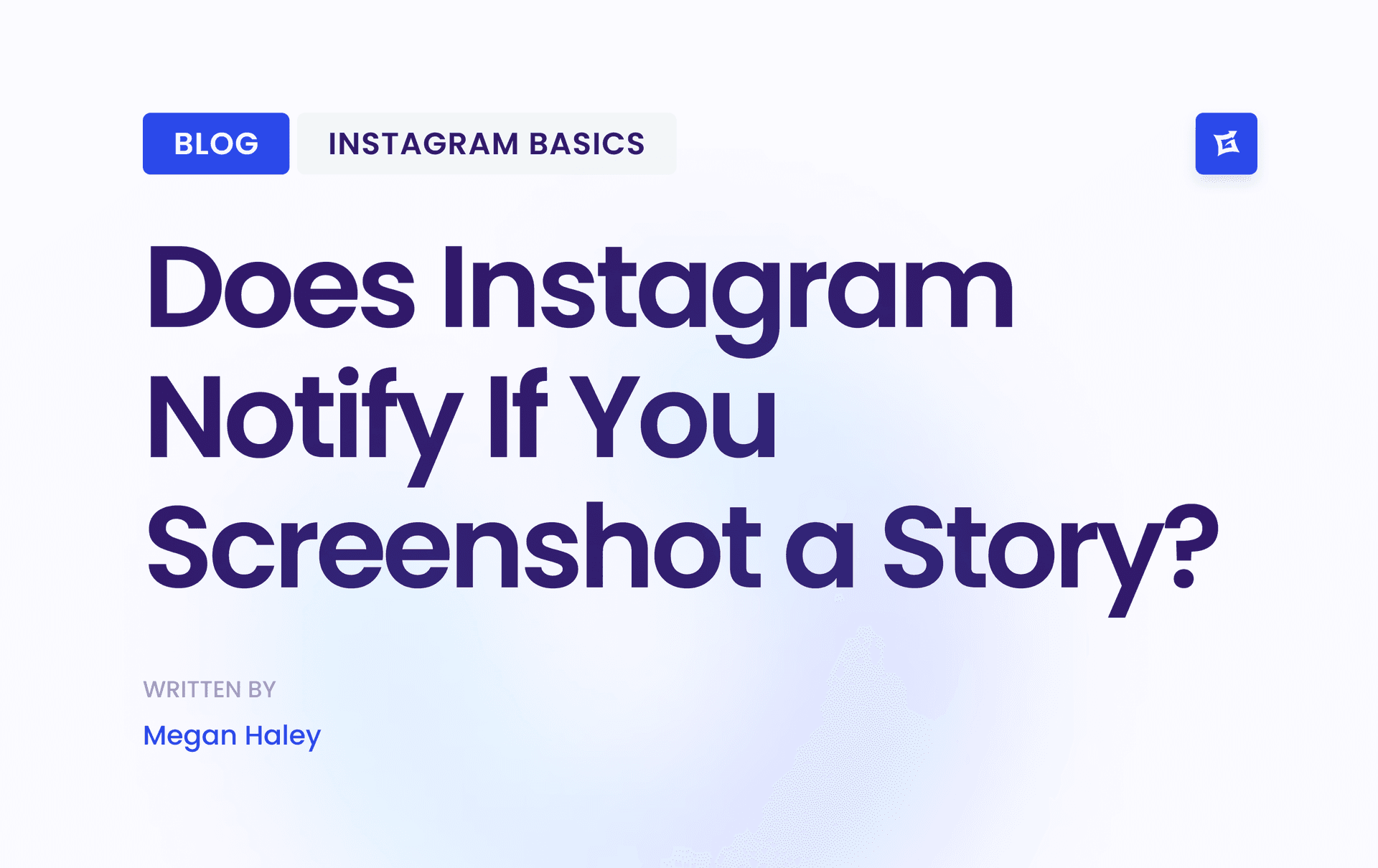



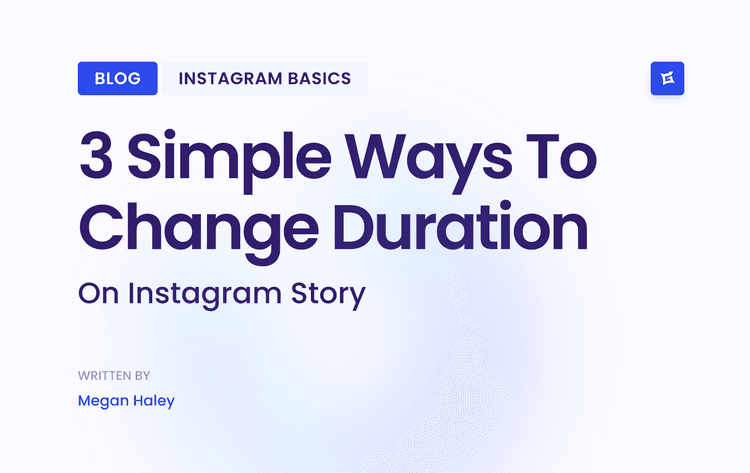
.png&w=750&q=75&dpl=dpl_Byg4UCPHSaHbHVVtp2RwFp1gwKki)
